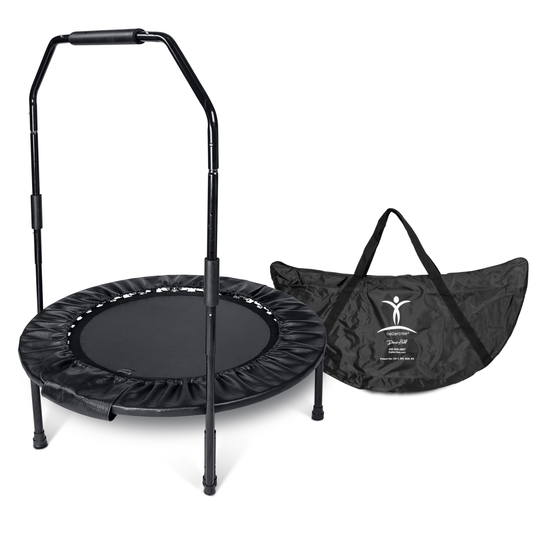Disclaimer: This Blog/Web Site is made available by the publisher for educational purposes only as well as to give general information & understanding regarding the industry. It is not to be used as specific medical advice or to replace consulting with your doctor. You should always consult with your doctor. By using this Blog / Web Site you understand that this Blog/Web Site should not be used as a substitute for medical advice from a licensed professional. For our full disclaimer, please read: Cellercise® Disclaimer
According to the National Osteoporosis Foundation, one in two women and one in four men over the age of fifty will break a bone due to osteoporosis. While drinking milk is a good idea, it’s not enough to guarantee strong bone density on its own.
Myths About Osteoporosis
One of the most dangerous myths about osteoporosis is that it is a normal part of aging. Some people hear about bone loss and think if their mother and grandmother had it, it must be inevitable. In reality, individuals can prevent osteoporosis and keep their bones healthy for a lifetime. Here are some of the most common myths about osteoporosis.
- Not getting enough calcium causes osteoporosis – Calcium helps prevent bone loss, but taking a high dose doesn’t guarantee healthy bones. The body requires vitamin D, vitamin K, magnesium and strontium for calcium absorption, so if you aren’t getting key nutrients, what you take passes right out of your system.
- If you have osteoporosis you’ll break a bone – Some people hear they have osteoporosis and begin avoiding all types of physical activity for fear of a fracture. A bone density test only gives part of the picture.
- Only females experience bone loss – Many people think of osteoporosis as a disease only for older women. There may be a connection to estrogen, but osteoporosis doesn’t only affect women. As many as two million American men have it already and 12 million more have early signs of thinning bones.
- Once you have it, you’re doomed to poor bone health – While no cure exists, a combination of medication, diet and exercise can be an effective treatment.
- Osteoporosis tests are painful – A bone mineral density test uses a machine much like an X-ray. It takes only a few minutes and doesn’t hurt at all.
What Causes Osteoporosis?
People don’t think of their bones unless they have a problem, but bones are made of living, growing tissue. When the body stops forming enough new bone or too much old bone is reabsorbed, bones become thin and brittle. Bones are typically at their most dense when people are in their 20s. As women age they experience a decline in the amount of estrogen their body produces and men produce less androgen. Fluctuating hormones cause individuals to lose more bone than their body creates. Diet also affects bone loss. A wide range of nutrients contribute to bone and overall body health. Cigarette smoking, eating disorders, heavy drinking and certain medications can also impact bone density. Weight bearing and muscle-building exercises help build and maintain strong bones. When individuals don’t use their muscles or subject bones to mild impact, bones deteriorate.
Problems Caused by Low Bone Density
The International Osteoporosis Foundation points out half of all women and 25 percent of men will suffer fractures from osteoporosis. The organization seeks to promote awareness and early treatment because of the widespread nature of the problem. Hip fractures cause pain and limit mobility. They are one of the main reasons older people become unable to live independently. The Journal of the American Medical Association recently released a study that examined hip fracture and longevity. The 12-month mortality rate for hip fracture is around 20 percent. Spinal compression fractures from osteoporosis cause pain, deformity and immobility. When fractures alter posture, they can even impact pulmonary function. Osteoporosis results in huge medical expenditures nationwide as patients require hospitalization and medical care. If fractures immobilize individuals they have to pay for ongoing help or enter a long-term care facility. When fractures happen to adults who are still employed, they lead to time off work and a loss of income.
How to Build Bone Density
Nutrition and exercise both prevent and slow the development of osteoporosis. In the past, experts assumed all exercise was good for the bones. Then a University of Colorado researcher made the surprising discovery that professional swimmers had lower bone density than expected. Competitive cycling and weight lifting also did not seem to impact bone health. Researchers expected runners to have more bone problems because they subject their bodies to consistent pounding. Later study found weight-bearing exercise like running can actually improve bone density. An Indiana University School of Medicine Professor suggested during some types of exercise, bone bends and squeezes fluid throughout cells. The fluid encourages cells to create more dense bone. One of the best exercises is jumping up and down. Japanese studies tested jumping mice and found they significantly improved bone mass in just 24 weeks.
Benefits of Rebounding
When astronauts spend long periods of time in space, their muscles and bones deteriorate from lack of use. NASA compared the effects of jumping on a trampoline to running on a treadmill and found rebounding offered significant benefits to managing bone density in astronauts. The same health benefits of rebounding can be enjoyed by individuals with osteoporosis. The low impact activity stimulates new bone production while keeping strain off joints and allowing for safe exercise. Lose weight, tone muscles throughout the body and improve circulation all while having the time of your life.
NOTE: Remember to always consult with your doctor or health professional before starting new exercise routines.
Get Your Cellerciser® and start rebounding today!














